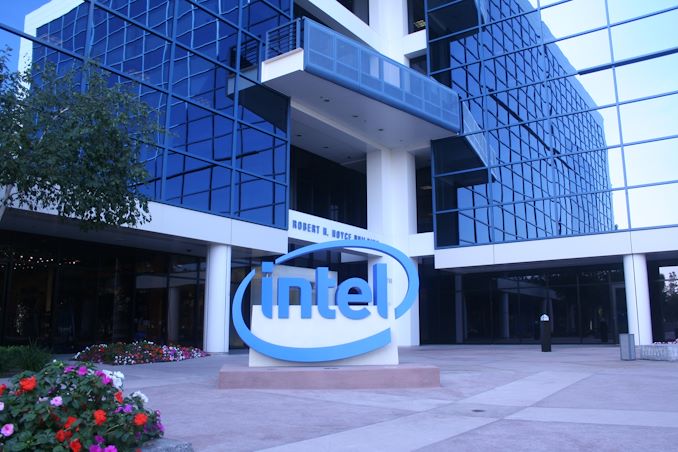Intel Reorganizes In Wake of 7nm Woes; Chief Engineering Officer Murthy Renduchintala To Depart
by Ryan Smith on July 27, 2020 5:30 PM EST
Coming in the wake of last week’s disclosure that their 7nm yields are roughly a full year behind schedule, Intel this afternoon has announced that they are reorganizing the technology side of the company. Key to this change is that Intel is breaking up its monolithic Technology, Systems Architecture and Client Group (TSCG) into several smaller groups, all of which will report directly to CEO Bob Swan. Meanwhile Intel’s chief engineering officer, Dr. Murthy Renduchintala, who had been leading the TSCG, will be departing the company at the end of next week. The reorganization is effective immediately.
As a result of this reorganization, TSCG is being broken up into five groups focusing on manufacturing and architecture. These are:
- Technology Development: Focused on developing next-generation process nodes. Led by Dr. Ann Kelleher.
- Manufacturing and Operations: Focused on ramping current process nodes and building out new fab capacity. Led by Keyvan Esfarjani.
- Design Engineering: A recently-created group responsible for Intel’s technology manufacturing and platform engineering. Led on an interim basis by Josh Walden while Intel searches for a permanent leader.
- Architecture, Software and Graphics: Developing Intel’s architectures and associated software stacks. Led by Raja Koduri (continuing).
- Supply Chain: Handling Intel’s supply chain and relationships with important suppliers. Led by Dr. Randhir Thakur (continuing).
It should be noted that while Intel’s brief announcement does not mention last week’s disclosure, the timing and resulting personnel changes are unmistakably related to the 7nm delay. Today’s reorganization is the second shuffle for Intel in as many months, as the company reorganized a number of product groups after Jim Keller departed for (honest to goodness) personal reasons.
Meanwhile, TSCG’s former president, Dr. Murthy Renduchintala, will be departing the company on August 3rd. Renduchintala joined Intel in 2015, and for most of the past half-decade has been responsible for overseeing all of TSCG’s efforts, and especially involved in the development of the company’s next-generation process nodes. Intel’s reorganization announcement makes no specific mention of Renduchintala beyond his date of departure, however it is difficult to imagine that this is anything other than Intel pushing out Renduchintala in light of their process woes. More than anything else, Renduchintala was the face of Intel’s monolithic, vertically-integrated design and manufacturing strategy; a strategy that is no more as Intel seriously investigates building parts of leading-edge processes at competing fabs.
Going forward, the task of developing Intel’s 7nm and 5nm process nodes will be led by Dr. Ann Kelleher. Kelleher gets the incredibly important (but less-than-enviable) challenge of getting Intel’s fab development process back on track, as Intel seeks to regain its crown as the world’s leading chip fab. Kelleher was previously the head of Intel’s manufacturing group, overseeing the recent ramp-up of Intel’s 10nm process. Meanwhile Dr. Mike Mayberry, a central figure in Intel’s labs who was already set to retire this year, will be staying on until then to assist in the transition.
Overall, while Intel’s reorganization is unlikely to dramatically change the company’s day-to-day operations, it’s very much the start of a new era for the company. As Intel’s ongoing manufacturing woes have driven them to look towards outside fabs for more products, the company’s traditional vertically-integrated structure is less than ideally suited for the task – and as much as Intel manufacturing would like to keep Intel-designed products within the company, Intel’s chip and architecture groups need to be able to freely look elsewhere. And this reorganization is going to be an important step in enabling that.
Source: Intel












140 Comments
View All Comments
808Hilo - Tuesday, July 28, 2020 - link
The 'networking' primary goal is to eliminate the competitive element of knowledge generation and applying forward change. He is a perfect fit in Intels corporate echelons in an industry made of 2 main competitors and 2 second rate corps. Koduri designed AMD productline made me not buying their graphic cards. They were faulty. That has been remedied to a certain degree today and still can be felt while the AMD CPU line has moved ahead of Intel in major ways. Lisa Su seems to understand that talent is merit and all others work for Intel.khanikun - Monday, July 27, 2020 - link
I'd imagine it'd be Intel licensing TSMC tech over going fablessSpunjji - Friday, July 31, 2020 - link
Agreed here. It would be really bizarre of them to ditch the massive investment they have in manufacturing, and their situation isn't at all like AMD's when they dropped their fabs.psychobriggsy - Tuesday, July 28, 2020 - link
I don't think Intel will go fabless unless their 7nm fails entirely. Now one leak suggests that Intel's 7nm is in a situation worse than Intel's 10nm was in at the same time - and we know that 10nm was delayed years as a result.2025: Intel is fabless... AMD and Apple have bought all spare capacity at TSMC because they're tier one TSMC customers and got in whilst they could. Samsung's processes are a node behind in density, with middling yields (so nothing different here). Intel is prepping 14++++++++ and 10++++,
Lord of the Bored - Wednesday, July 29, 2020 - link
2025: Intel is fabless, waiting in line for limited capacity at TSMC. TSMC's increasingly-complex batch scheduling system attains self-awareness, names itself Skynet, hacks mainland China's defense computers, and launches missile strikes globally. Judgement Day marks the beginnning of what will become known as the Metal Wars.Spunjji - Friday, July 31, 2020 - link
lolSkyBill40 - Thursday, July 30, 2020 - link
I just don't see them going fully fabless. I live less than five minutes from the front door of Fab 42 and that place is STILL undergoing construction. They've already spent billions on this fab and others like it, so them giving all that up seems a tad ridiculous. If they can't turn things around and get back on track, then who knows. Even then I don't see it going the way of completely third party.Your pin count may vary.
sing_electric - Monday, July 27, 2020 - link
For those of you keeping score at home, that means that in 5 years at Intel, Murthy wasn't able to oversee a SINGLE successful process shrink across all of Intel's high-end/mainstream processor offerings.That's a terrible track record, especially considering it's Intel, who were so confident in their process technology that they made tic-tock work, well, like clockwork for years.
catavalon21 - Monday, July 27, 2020 - link
"they made tic-tock work, well, like clockwork..."+1
Kamen Rider Blade - Monday, July 27, 2020 - link
Since Bob Swan is reacting, how many years till Intel's Manufacturing and R&D is split and Intel's Foundaries become it's own thing like AMD.